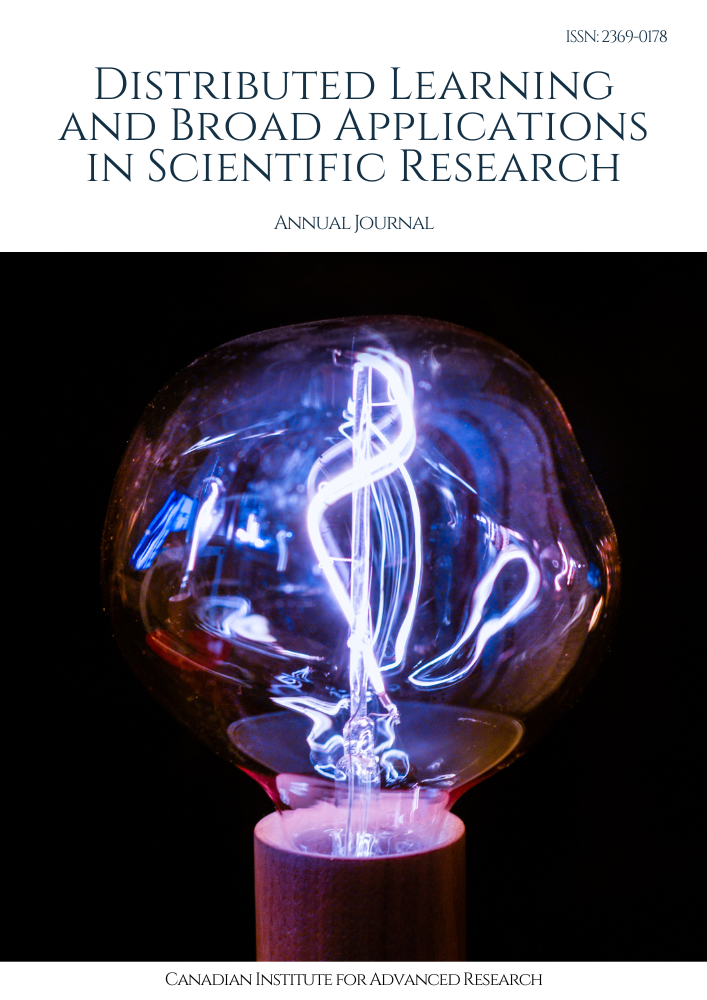Virtual Reality User Experience - Challenges and Solutions: Analyzing challenges and solutions in virtual reality (VR) user experience (UX) design for creating immersive and engaging virtual environments
Keywords:
User Experience, UX DesignAbstract
Virtual Reality (VR) has emerged as a transformative technology, offering immersive experiences across various domains. However, designing compelling VR experiences comes with unique challenges. This paper examines key challenges and presents solutions in VR user experience (UX) design. We discuss the importance of presence, comfort, interaction, and content in creating engaging VR environments. Various strategies, including interface design, locomotion techniques, and content optimization, are explored. Additionally, we address the role of user testing and feedback in refining VR experiences. By understanding these challenges and implementing effective solutions, designers can enhance the overall VR UX, making it more accessible and enjoyable for users.
Downloads
References
Sadhu, Ashok Kumar Reddy, et al. "Enhancing Customer Service Automation and User Satisfaction: An Exploration of AI-powered Chatbot Implementation within Customer Relationship Management Systems." Journal of Computational Intelligence and Robotics 4.1 (2024): 103-123.
Tatineni, Sumanth. "Applying DevOps Practices for Quality and Reliability Improvement in Cloud-Based Systems." Technix international journal for engineering research (TIJER)10.11 (2023): 374-380.
Perumalsamy, Jegatheeswari, Muthukrishnan Muthusubramanian, and Selvakumar Venkatasubbu. "Actuarial Data Analytics for Life Insurance Product Development: Techniques, Models, and Real-World Applications." Journal of Science & Technology 4.3 (2023): 1-35.
Devan, Munivel, Lavanya Shanmugam, and Manish Tomar. "AI-Powered Data Migration Strategies for Cloud Environments: Techniques, Frameworks, and Real-World Applications." Australian Journal of Machine Learning Research & Applications 1.2 (2021): 79-111.
Selvaraj, Amsa, Chandrashekar Althati, and Jegatheeswari Perumalsamy. "Machine Learning Models for Intelligent Test Data Generation in Financial Technologies: Techniques, Tools, and Case Studies." Journal of Artificial Intelligence Research and Applications 4.1 (2024): 363-397.
Katari, Monish, Selvakumar Venkatasubbu, and Gowrisankar Krishnamoorthy. "Integration of Artificial Intelligence for Real-Time Fault Detection in Semiconductor Packaging." Journal of Knowledge Learning and Science Technology ISSN: 2959-6386 (online) 2.3 (2023): 473-495.
Tatineni, Sumanth, and Naga Vikas Chakilam. "Integrating Artificial Intelligence with DevOps for Intelligent Infrastructure Management: Optimizing Resource Allocation and Performance in Cloud-Native Applications." Journal of Bioinformatics and Artificial Intelligence 4.1 (2024): 109-142.
Prakash, Sanjeev, et al. "Achieving regulatory compliance in cloud computing through ML." AIJMR-Advanced International Journal of Multidisciplinary Research 2.2 (2024).
Venkataramanan, Srinivasan, et al. "Leveraging Artificial Intelligence for Enhanced Sales Forecasting Accuracy: A Review of AI-Driven Techniques and Practical Applications in Customer Relationship Management Systems." Australian Journal of Machine Learning Research & Applications 4.1 (2024): 267-287.
Makka, A. K. A. “Optimizing SAP Basis Administration for Advanced Computer Architectures and High-Performance Data Centers”. Journal of Science & Technology, vol. 1, no. 1, Oct. 2020, pp. 242-279, https://thesciencebrigade.com/jst/article/view/282.
Downloads
Published
Issue
Section
License

This work is licensed under a Creative Commons Attribution-NonCommercial-ShareAlike 4.0 International License.
License Terms
Ownership and Licensing:
Authors of research papers submitted to Distributed Learning and Broad Applications in Scientific Research retain the copyright of their work while granting the journal certain rights. Authors maintain ownership of the copyright and have granted the journal a right of first publication. Simultaneously, authors agree to license their research papers under the Creative Commons Attribution-NonCommercial-ShareAlike 4.0 International (CC BY-NC-SA 4.0) License.
License Permissions:
Under the CC BY-NC-SA 4.0 License, others are permitted to share and adapt the work, as long as proper attribution is given to the authors and acknowledgement is made of the initial publication in the journal. This license allows for the broad dissemination and utilization of research papers.
Additional Distribution Arrangements:
Authors are free to enter into separate contractual arrangements for the non-exclusive distribution of the journal's published version of the work. This may include posting the work to institutional repositories, publishing it in journals or books, or other forms of dissemination. In such cases, authors are requested to acknowledge the initial publication of the work in this journal.
Online Posting:
Authors are encouraged to share their work online, including in institutional repositories, disciplinary repositories, or on their personal websites. This permission applies both prior to and during the submission process to the journal. Online sharing enhances the visibility and accessibility of the research papers.
Responsibility and Liability:
Authors are responsible for ensuring that their research papers do not infringe upon the copyright, privacy, or other rights of any third party. Scientific Research Canada disclaims any liability or responsibility for any copyright infringement or violation of third-party rights in the research papers.
If you have any questions or concerns regarding these license terms, please contact us at editor@dlabi.org.



